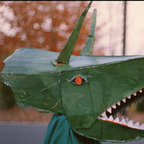Is Pop Music Addicted to Hand Clapping?
Analyzing the data on this exhausting new obsession
Everyone knows how to clap their hands, but no one thinks clapping is cool. The sound dredges up unwanted memories of kid songs, campfire sing-a-longs, and hokey DJs that can’t stop playing “Cha Cha Slide.” Hand clapping is the unpopular cousin of whistling. You won’t find Paul McCartney clapping at the end of a Kanye track. Nor would anyone still remember the indie earworm “Young Folks” if it not for its infectious whistle.
If hand clapping sounds old fashioned, well, that’s because it is. As a way to show applause, we’ve been doing it dating back to Roman times. And as a musical instrument, its earliest use is from the 1800s. But hand clapping didn’t really start to become ubiquitous until the 1960s and 70s, when Motown groups used it to enhance the catchiness of their songs and disco artists clapped to amplify snare drums.
Then, almost as suddenly as its popularity had grown, hand clapping fell out of favor. Perhaps it had something to do with counterculture snaps — or the rise of punk and the collective exile of disco. Either way, hand clapping collected dust throughout the 90s and early aughts, only seeing consistent use in hip-hop music as a snare replacement (see: “The Humpty Dance”).
Fast-forward to 2016, over thirty years since hand clapping ceased to dominate the airwaves, and we’re in the midst of a resurgence across all genres. Just look at Meghan Trainor’s discography, or one of this year’s song of summer contenders from Fitz and the Tantrums, “HandClap.” So why are so many of today’s pop artists revisiting what was once considered a well-worn music trope?
It’s no secret that a lot of pop music sounds the same. That’s part of the appeal. We have an inherent bias for music that follows a structure that we’re familiar with. It’s why brill building became a foolproof model for success in the 60s, and why a bulk of today’s Top 40 hits are written by a handful of songwriters like Max Martin and Dr. Luke.
The modern pop industry treats music trends the same way stockbrokers analyze the market. Dancehall and “tropical house” have been around for decades, but most people are hearing it for the first time through Justin Bieber and Drake. Songwriters thrive on targeting an upcoming fad and overcorrecting once it becomes successful. We’ve seen this happen recently with the “millennial whoop” — another one of pop music’s bad habits that is becoming played out. It’s also why more of today’s top artists sound more similar than they have over the past 50 years.
Hand clapping newfound acceptance owes its thanks to two distinctly different genres, folk and hip-hop. The rise in popularity of bands like Mumford & Sons and the Lumineers ushered in popular music’s mainstream infatuation with folk. Common tropes such as stomping, clapping, and an egregious use of chanting “Ho” became acceptable even for artists who were definitively not folk. And on the other end of the spectrum, artists continued to borrow heavily from hip-hop, with white artists repurposing trap, twerk and hand clapping for their own music.
In an attempt to further explore the question of why pop music is currently addicted to hand clapping, I analyzed Billboard’s Top 100 songs since 2009 and reported my results in the charts below.
Since 2009, songs in the yearly Billboard Top 100 that feature hand clapping have increased by 31%. There are a couple of explanations that account for such a dramatic shift. First, country music has seen an unprecedented decline amongst Top 40 charts. And even for bands that manage to break through, today’s country rarely uses hand clapping, opting for a more rock heavy sound found in sub-genres such as bro-country. Second, some of hand clapping’s earliest adopters are still producing music today. Artists such as Pharrell Williams, Taylor Swift, Pitbull, and Katy Perry have prolific amounts of hand clapping in their songs — and are popular enough to influence the rest of the market.
But is hand clapping really all that bad? For hip-hop artists, no — clapping is deeply embedded in its history and isn’t the prominent feature of the genre. As for the rest of pop music, songs with hand clapping have become exhausting. In the same way surprise albums are designed to artificially build energy and hype around an artist’s work, hand clapping accomplishes the same thing. We’ve reached a point where it’s just lazy songwriting — and as pop music continues to grow more insular, certain trends need to die out.
Or to put it bluntly, pop music needs a new gimmick.
If you enjoyed reading this, please click the ♥ below. This will help to share the story with others.
